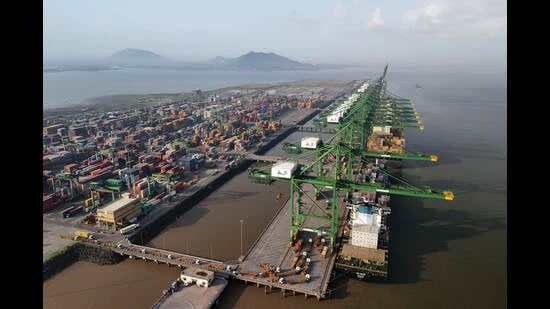Indian exporters will soon get duty-free access to Europe’s $25 trillion economy with three free trade agreements — two already clinched (with the EFTA bloc and the UK), and the one with the EU expected by December — people directly involved in the discussions said after India-EU trade talks achieved “significant convergence” in key areas last week.
The positive outcome of the recently concluded 14th round of India-EU trade negotiations on October 10 has raised hopes of an early conclusion of an FTA between world’s fastest growing major economy and a bloc of 27-European countries with estimated economy of $19.99 trillion, they added, requesting anonymity. India’s FTA with European Free Trade Association (EFTA), with an economy of $1.41 trillion is already in force, and its free trade deal with the UK (a $3.63 trillion economy) is expected to be operationalised soon.
Developments related to India-EU trade negotiations assumed significance after commerce secretary Rajesh Agrawal’s two-day visit to Brussels on October 10 to join the negotiating teams . During his Brussels’ visit, Agrawal met EU directorate-general for trade and economic security Sabine Weyand, and the two decided to resolve remaining issues through continuous discussions via virtual and physical modes, the people cited above said.
India-EU FTA talks are on a fast-track with many sensitives of both sides have been nearly resolved, they added. Some differences related to non-tariff barriers and specific sectors such as automobiles are expected to be resolved during the ongoing deliberations, they said. “Besides officer-level talks, a high-level meeting between the two sides is expected soon to review the progress and give a push to conclude the deal by the end of 2025. The intent was recently articulated by Commissioner Šefčovič,” one of them said.
After his India visit in mid-September, EU commissioner for trade and economic security Maroš Šefčovič on September 17 said: “A commercially meaningful EU-India Free Trade Agreement would unlock vast potential. By tackling both tariff and non-tariff barriers, we can drive new waves of trade and investment, strengthen our supply chains, and help safeguard open, rules-based global commerce.” In a significant gesture, last month the EU also approved 102 new Indian fishery establishments for seafood supplies.
After hitting a high-tariff wall in America, Indian exporters are expecting “some relief” from the FTA with the 27-nation EU. According to garment exporters, the three FTAs could see apparel exports increasing about two-and-a-half times from the existing $1.4 billion. “India’s FTAs with the UK, EFTA, and the ensuing agreement with EU will undoubtedly improve our export competitiveness in the European markets and help reduce the adverse impact of steep US tariffs a great deal,” said Apparel Export Promotion Council (AEPC) secretary general Mithileshwar Thakur.
According to Federation of Indian Export Organisations (FIEO) director general and CEO Ajay Sahai, these FTAs may not “directly offset” high US tariffs, but will enhance India’s competitiveness and attract investment and technology. “Collectively, they will strengthen India’s export resilience and mitigate the impact of tariff challenges in non-FTA markets such as the US,” he said.
To be sure, India and the US continue to work on a deal, and there’s been talk of some resolution by November.
Experts say that Indian exporters are bound to gain from the three FTAs , but added that to leverage the full potential of these markets, Indian industry would need to invest to match their benchmarks. “The new FTAs with the UK, EFTA, and EU will help diversify India’s export market, reducing reliance on the US. Zero-duty access will provide a substantial price advantage for Indian goods in Europe, making them competitive against rivals. However, Europe is a more regulated market than the US, and to fully benefit from the tariff advantage, Indian exporters will have to meet the European regulatory and quality, requirements,” said Agneshwar Sen, trade policy leader at EY India.
According to Nilaya Varma, CEO and founder of consulting firm Primus Partners, the FTAs with European nations “will strengthen India’s export diversification and partially offset the impact of elevated tariff barriers” in the US market. “Having said that the India-US trade relationship remains pivotal, given the United States’ continued importance as a destination for Indian pharmaceuticals, engineering goods, gems and jewellery, textiles, automotive components, IT/ITeS, and Global Capability Centre (GCC) services,” he added.
In dollar terms, the bilateral merchandise trade between India and EU was $136.53 billion in 2024-25 with $75.85 billion India’s exports to the EU and $60.68 billion imports from the bloc. As a block, it is India’s largest merchandise trading partner. In addition, bilateral services trade between the two partners is estimated to be over $51 billion in 2023. The EU accounts for approximately 17% of India’s total exports, whereas, India constitutes 9% of its total exports.
